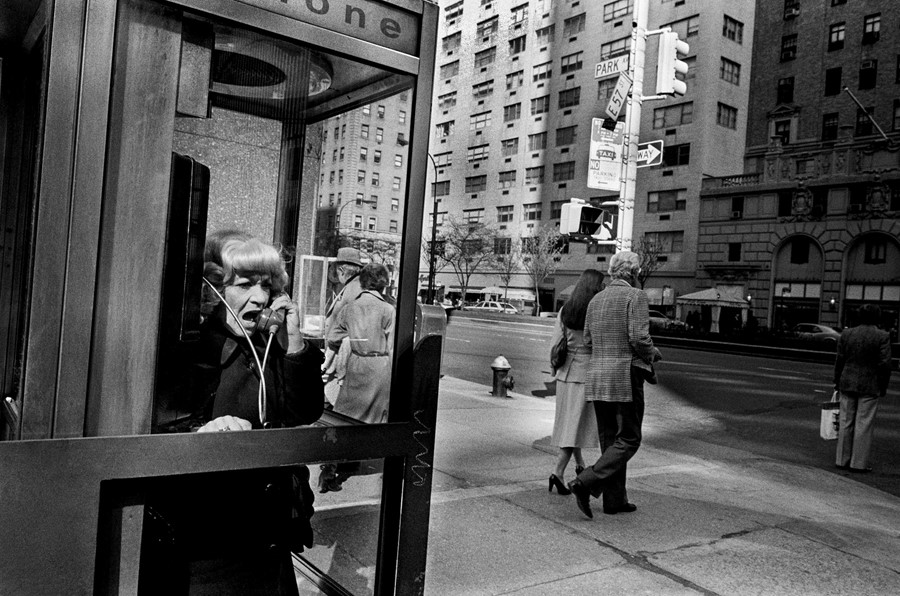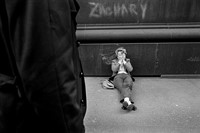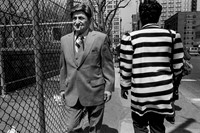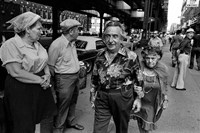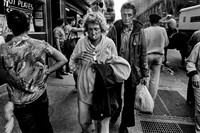Lost and Found, Bruce Gilden’s new photo book, comprises images the photographer took 45 years ago on the streets of New York, which he rediscovered last year by chance
45 years ago, New York was destitute. “The truth of the matter is the city was down,” recalls photographer Bruce Gilden. “President Gerald Ford had said to us, ‘drop dead, we’re not giving you any money’.” He points out a small detail in the background of his iconic photograph of a woman apparently screaming down the receiver of a public telephone. “If you look closely, that picture’s taken on 57th Street and Park Avenue – and if the sign on 57th Street and Park Avenue is hanging down sloppily, what the hell does that say about the city?”
It was then that Gilden, born in 1946, a college dropout and a former taxi driver, set out to capture the ‘heartbeat of the city’. His work promised a vision of New York street life on a par with Diane Arbus and Robert Frank, but for nearly 40 years this early body of work – comprising around 600 rolls of film – lay forgotten, only rediscovered last year when Gilden moved out of his Manhattan loft. These pictures, capturing the filth and fashion of the city, have at last been published in his newest book, Lost and Found.
The book shows Gilden finding his style and trying his hand at new techniques – or, as he describes it, “Bruce Gilden before he really was Bruce Gilden”. Shot entirely in black and white, it would still be some time before he adopted his signature stark flash. You get a sense of how sincerely he took Robert Capa’s maxim to heart: “If your photographs aren’t good enough, you’re not close enough.” In these pictures, he has already mastered his method of centring on one or two strangers, getting up close and photographing them quickly, before melting back into the crowd.
“When you’re looking from a distance, it’s different from being inside. From a distance everything looks good, but inside you have to be able to be in the right position, and the subject has to be in the right position for you to get a good picture,” the photographer explains. “See, people should understand that when you work as close as I work, you have to really be sharp, and what I mean by ‘sharp’ is you have to take that picture close, not interfere with the natural rhythm, not let them separate.”
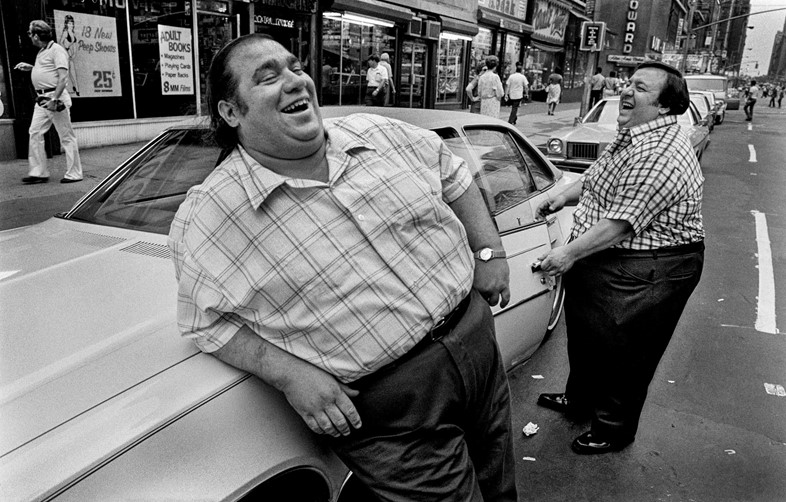
“Some people complain about how I work, but I don’t understand why,” he continues. “I think maybe they should sit in their chair and be sedentary their whole life. Look, you’re on the street, people knock into you, people smoke, people do this, people do that. There’s a lot of things happening on the street and it’s not how you do it, it’s how comfortable you are. If you were taking a picture of me and you’re 40 feet away, I’d find you’re a sneak. At least with me, I’m there.”
Despite his fleeting encounters, Gilden often expresses a profound empathy for his subjects, particularly the downtrodden. He explains how living with the fractious relationship between his parents made him “a bit of an outsider” and taught him to be a good listener and onlooker, as well as giving him “a pretty good bedside manner”, which allows him to get closer than most other photographers. “Streetwise, I think I’m as smart as anybody. I have a nose for it, like a sixth sense. That’s my thing – I know what I can do and what I can’t do, and I think that’s the most important thing.”
Over the near half-century since Gilden started working, New York has changed, for better or worse. “That’s the kind of thing that’s missing in New York now,” he says of his photograph of two laughing twins stood outside a peep show, “this kind of crass, vulgar window that adds so much to the pictures – because the street itself takes on a life of its own, and that’s what you don’t have today. Today it has a life, but it’s totally generic.” Gilden compares it to looking back at Brassaï’s pictures of 1930s Paris: the city may be gone forever, but then we can still sense its character through encounters with the enigmatic individuals who make it.
Lost and Found by Bruce Gilden is out now, published by Éditions Xavier Barral.
